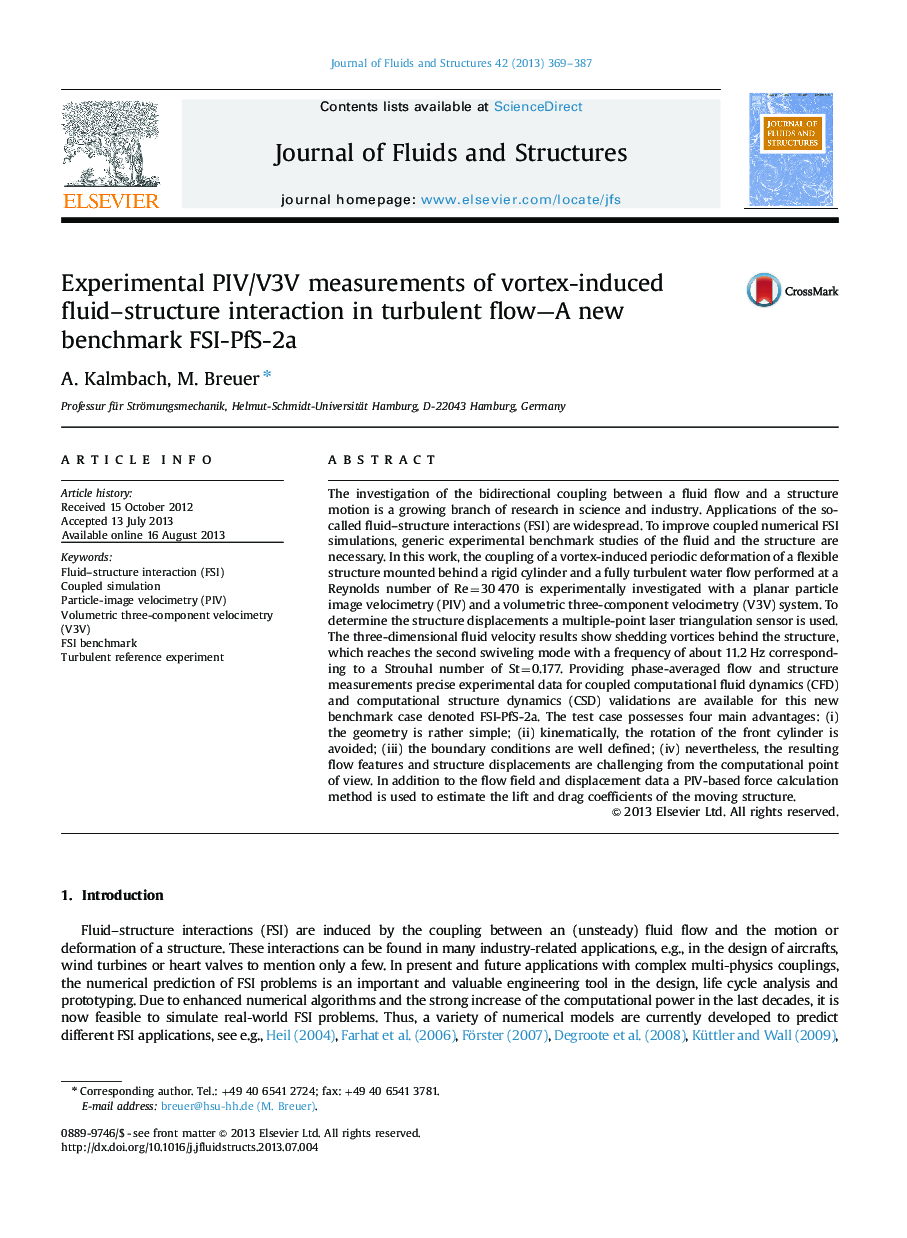| کد مقاله | کد نشریه | سال انتشار | مقاله انگلیسی | نسخه تمام متن |
|---|---|---|---|---|
| 792343 | 1466605 | 2013 | 19 صفحه PDF | دانلود رایگان |

• Experimentally investigated fluid–structure interaction benchmark FSI-PFS-2a.
• Deformation of a rubber plate in a turbulent flow past a cylinder at Re=30 470.
• Optical contact-free 3D-flow (PIV, V3V) and 2D-structure measurements.
• Quasi-periodic oscillation of the flexible structure in the second swiveling mode.
• Experimental reference data available for comparison with numerical FSI methods.
The investigation of the bidirectional coupling between a fluid flow and a structure motion is a growing branch of research in science and industry. Applications of the so-called fluid–structure interactions (FSI) are widespread. To improve coupled numerical FSI simulations, generic experimental benchmark studies of the fluid and the structure are necessary. In this work, the coupling of a vortex-induced periodic deformation of a flexible structure mounted behind a rigid cylinder and a fully turbulent water flow performed at a Reynolds number of Re=30 470 is experimentally investigated with a planar particle image velocimetry (PIV) and a volumetric three-component velocimetry (V3V) system. To determine the structure displacements a multiple-point laser triangulation sensor is used. The three-dimensional fluid velocity results show shedding vortices behind the structure, which reaches the second swiveling mode with a frequency of about 11.2 Hz corresponding to a Strouhal number of St=0.177. Providing phase-averaged flow and structure measurements precise experimental data for coupled computational fluid dynamics (CFD) and computational structure dynamics (CSD) validations are available for this new benchmark case denoted FSI-PfS-2a. The test case possesses four main advantages: (i) the geometry is rather simple; (ii) kinematically, the rotation of the front cylinder is avoided; (iii) the boundary conditions are well defined; (iv) nevertheless, the resulting flow features and structure displacements are challenging from the computational point of view. In addition to the flow field and displacement data a PIV-based force calculation method is used to estimate the lift and drag coefficients of the moving structure.
Journal: Journal of Fluids and Structures - Volume 42, October 2013, Pages 369–387